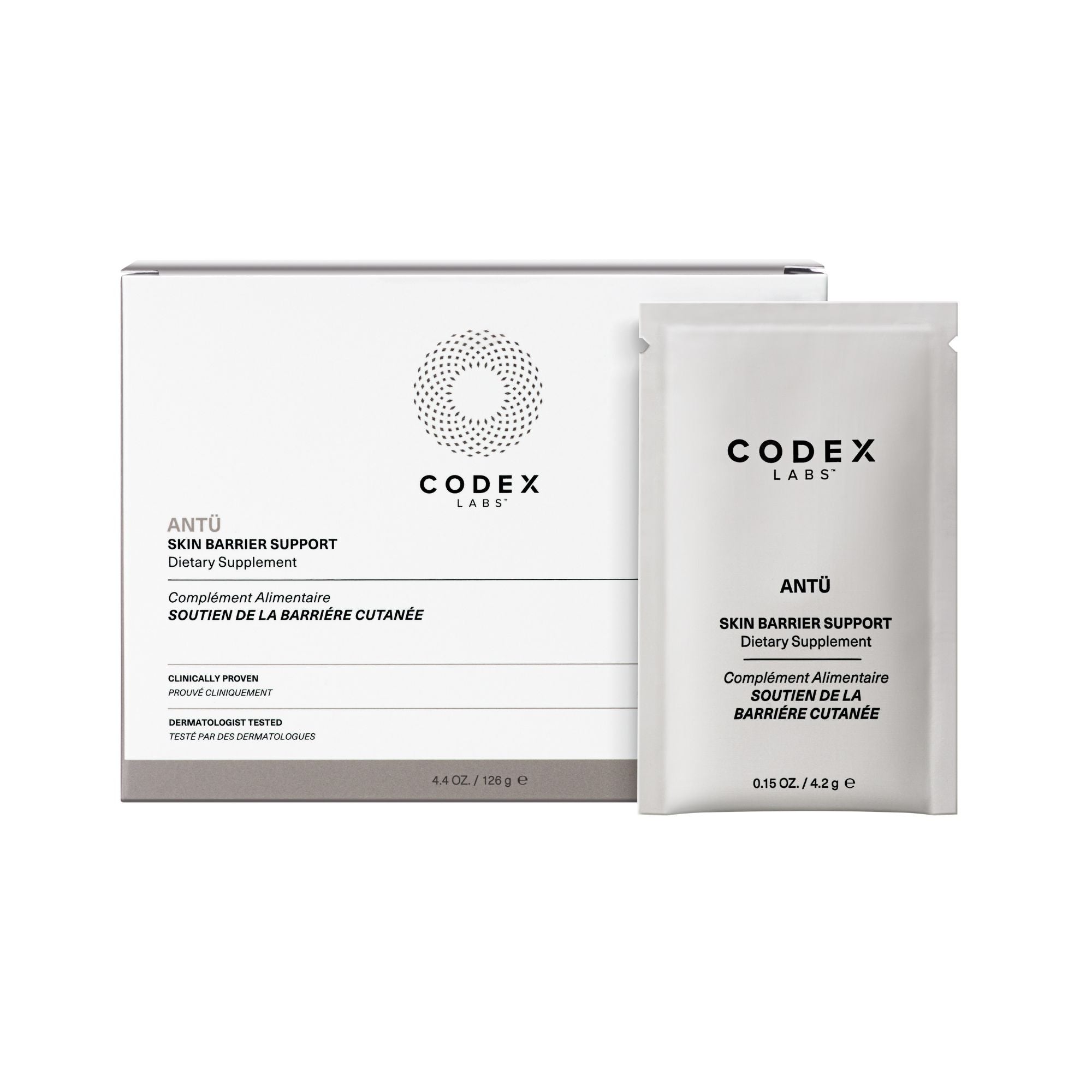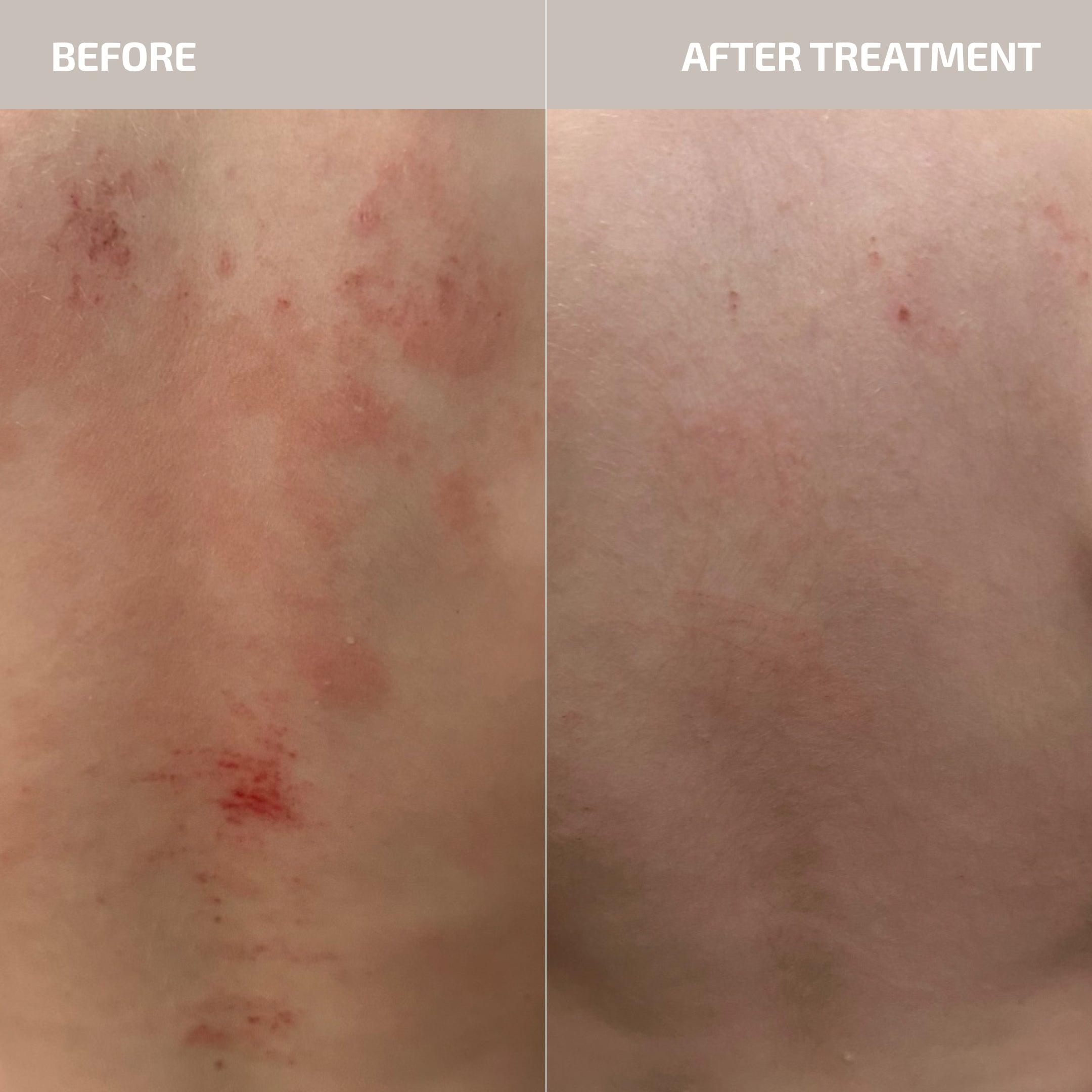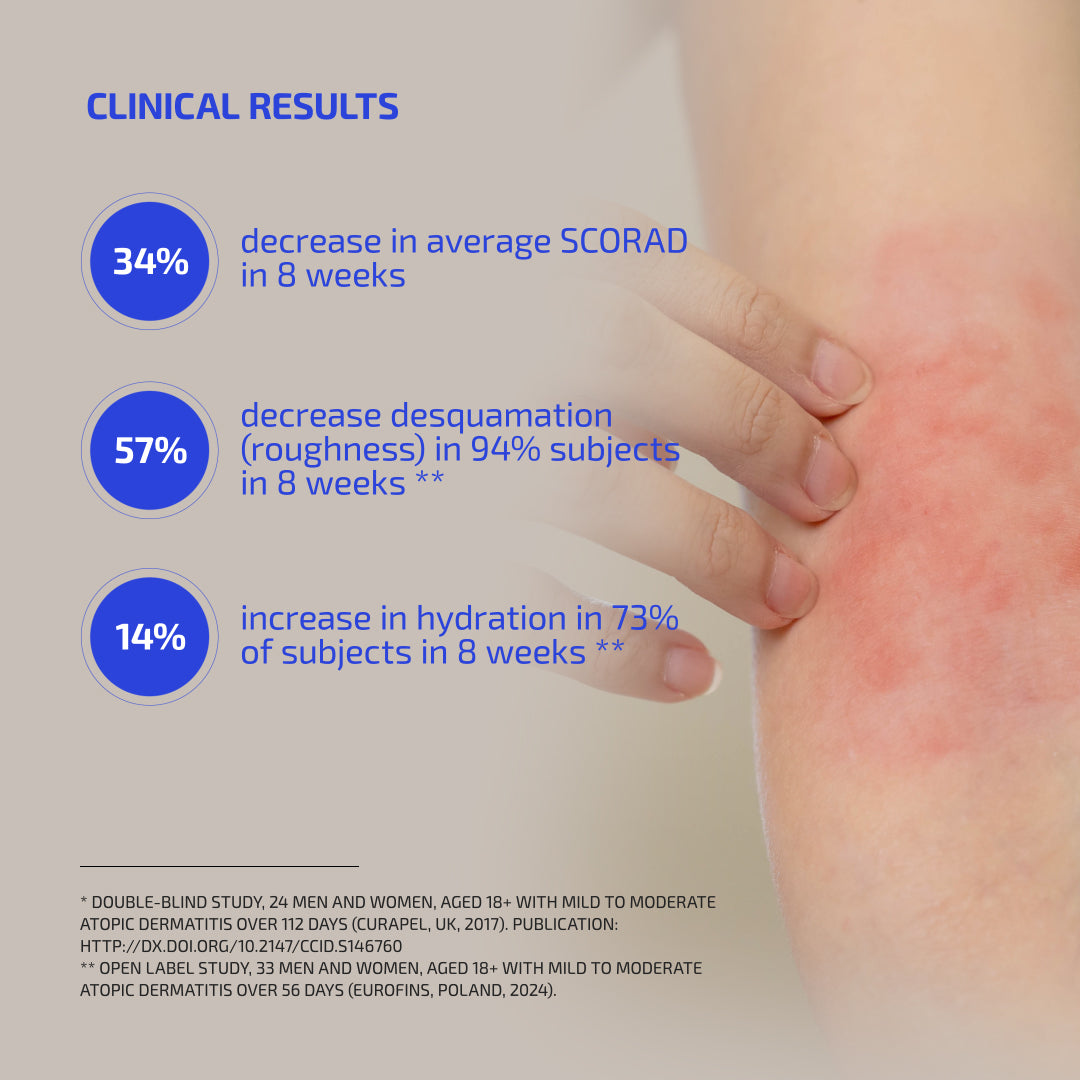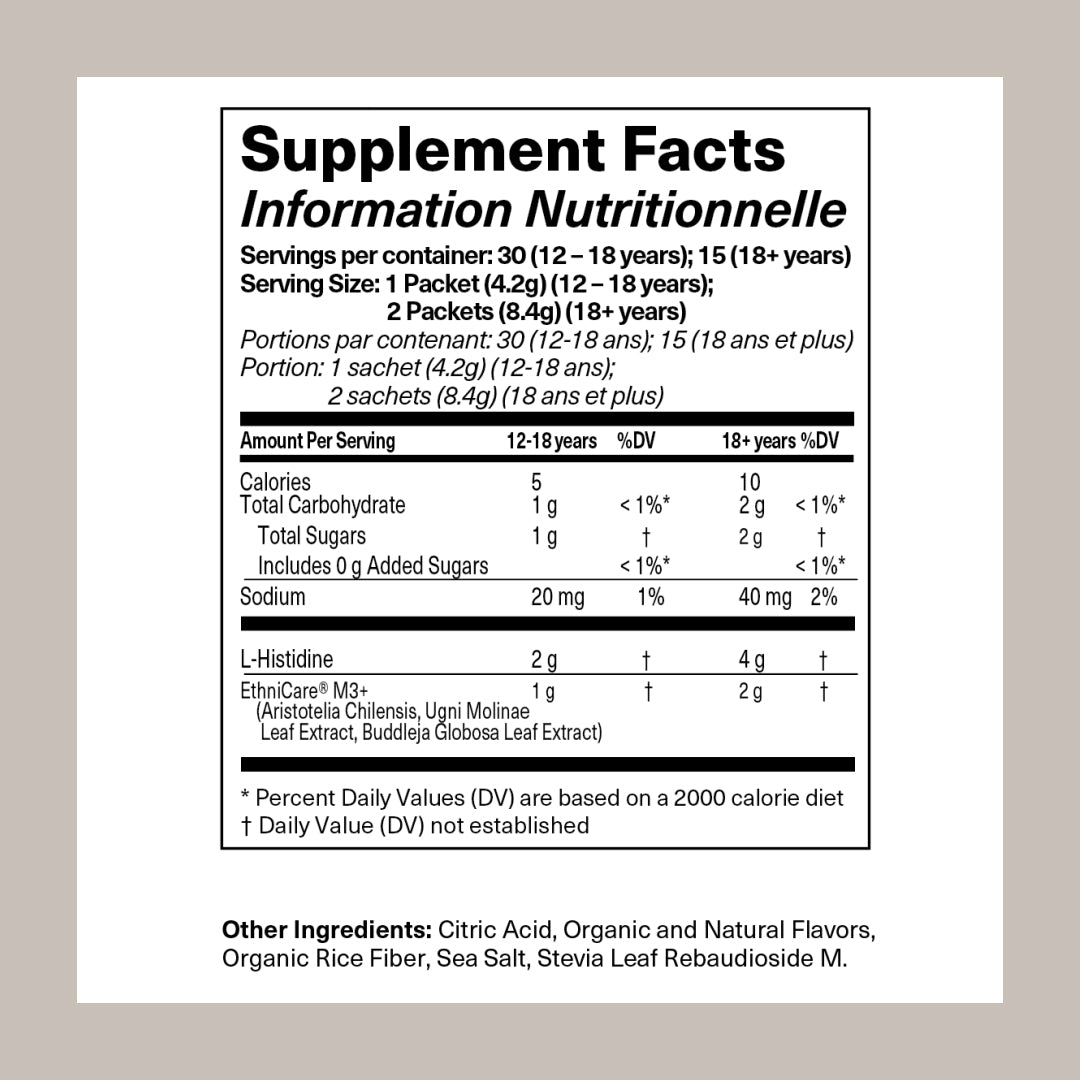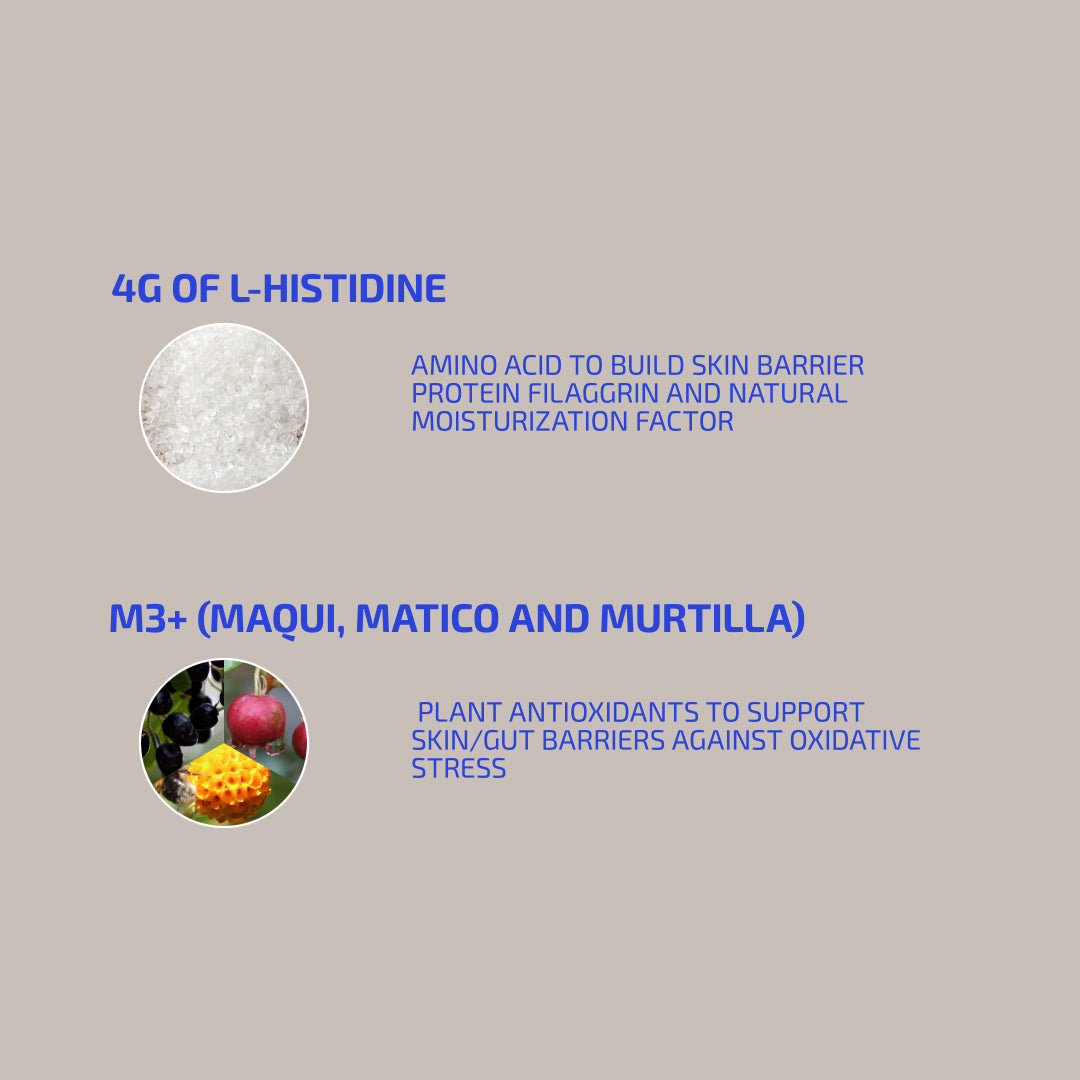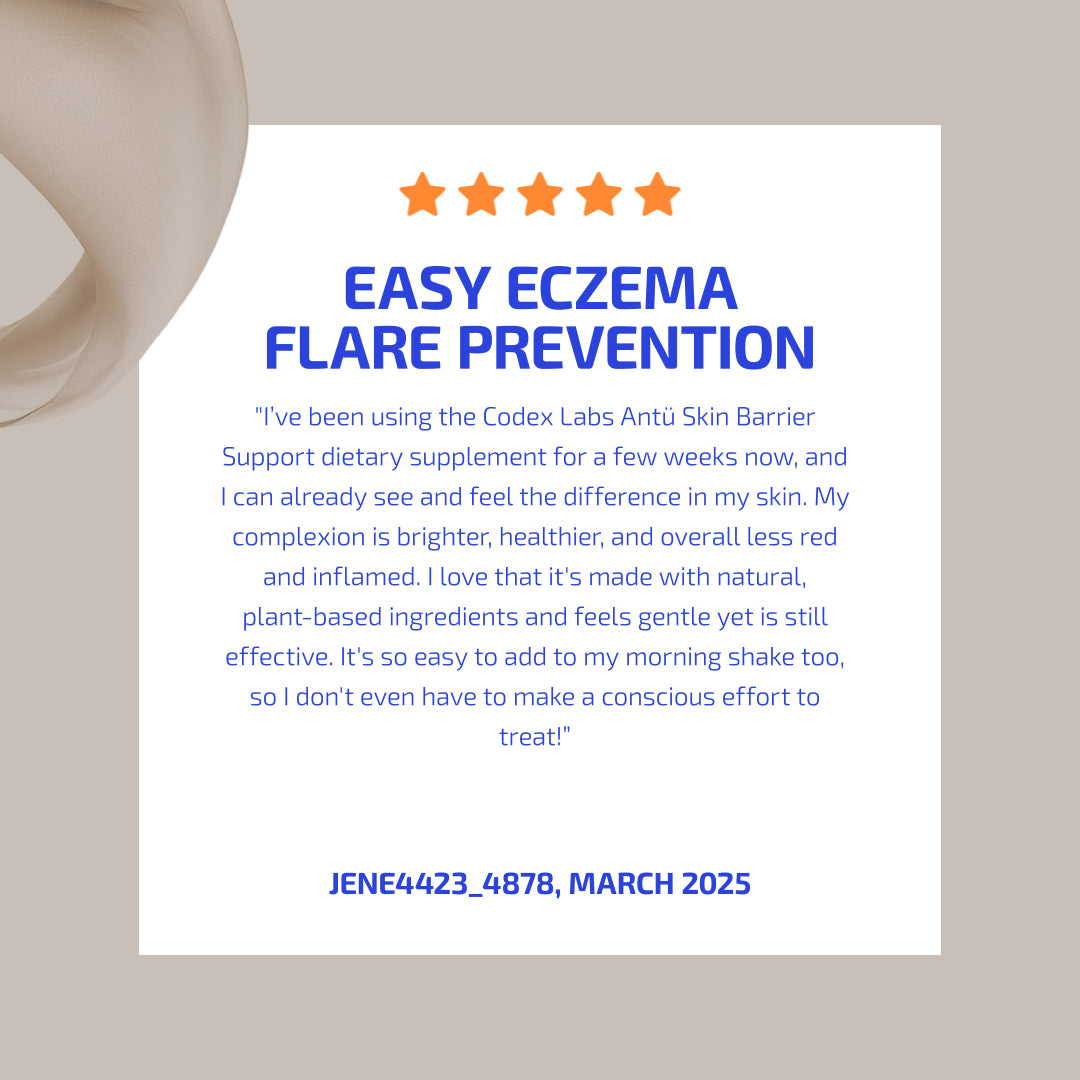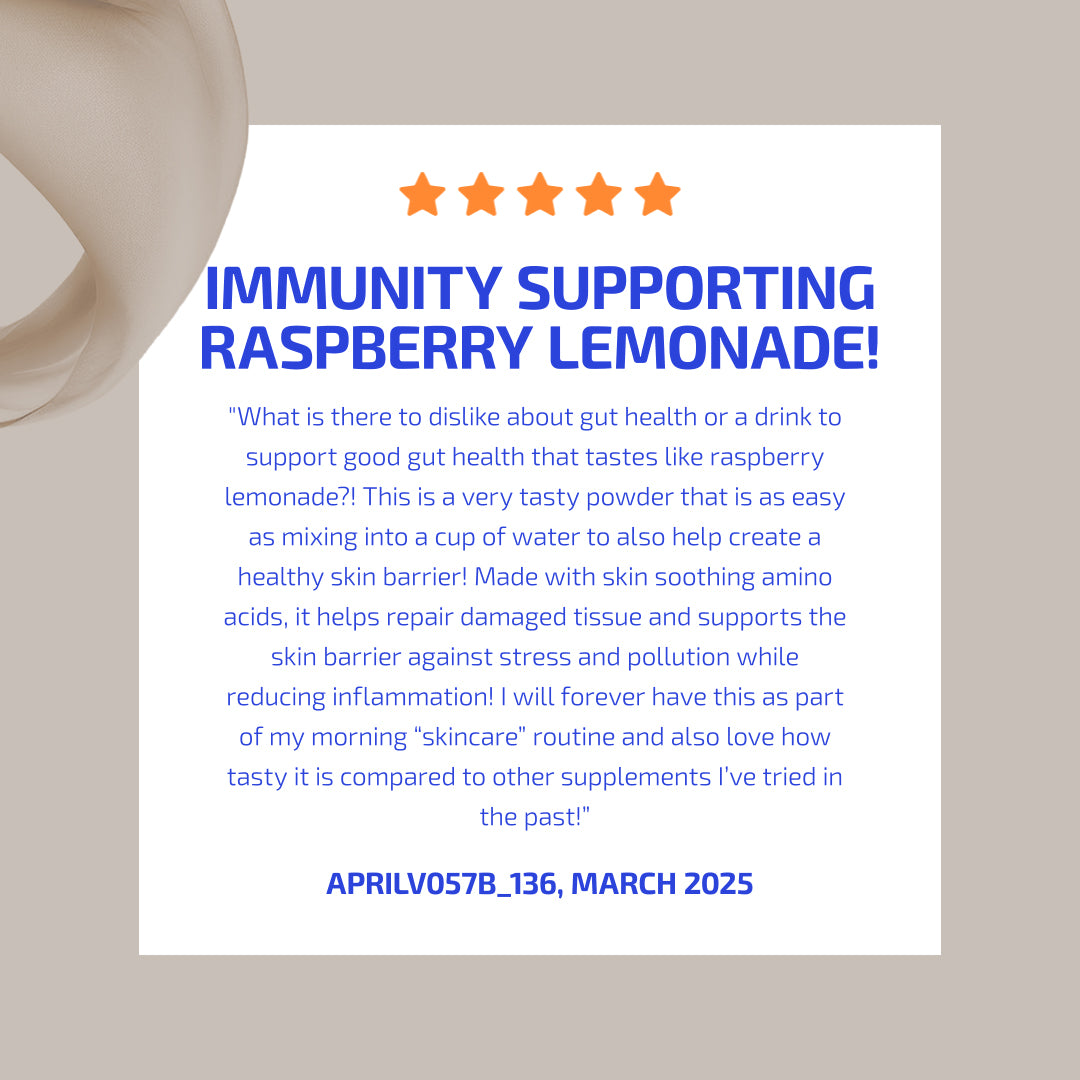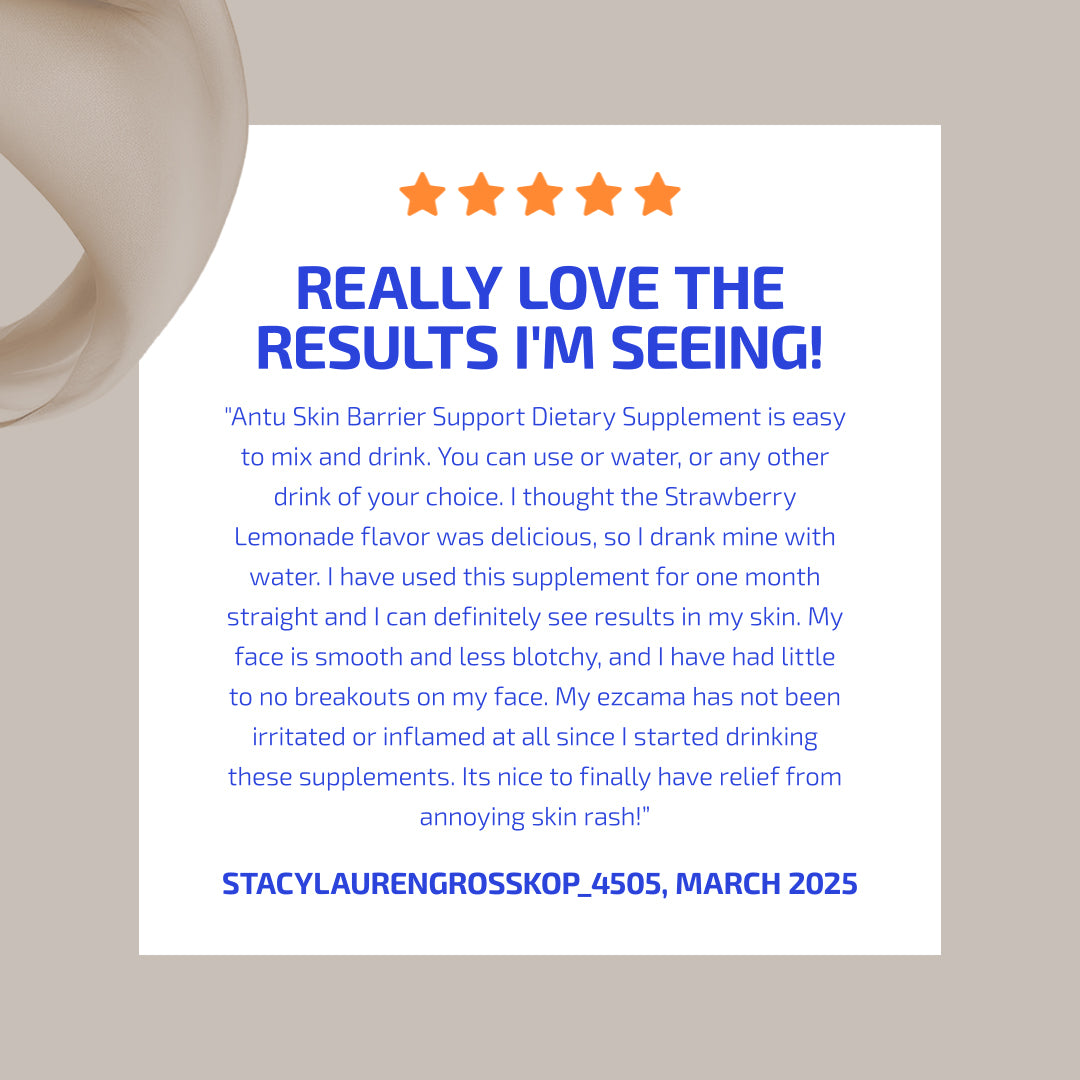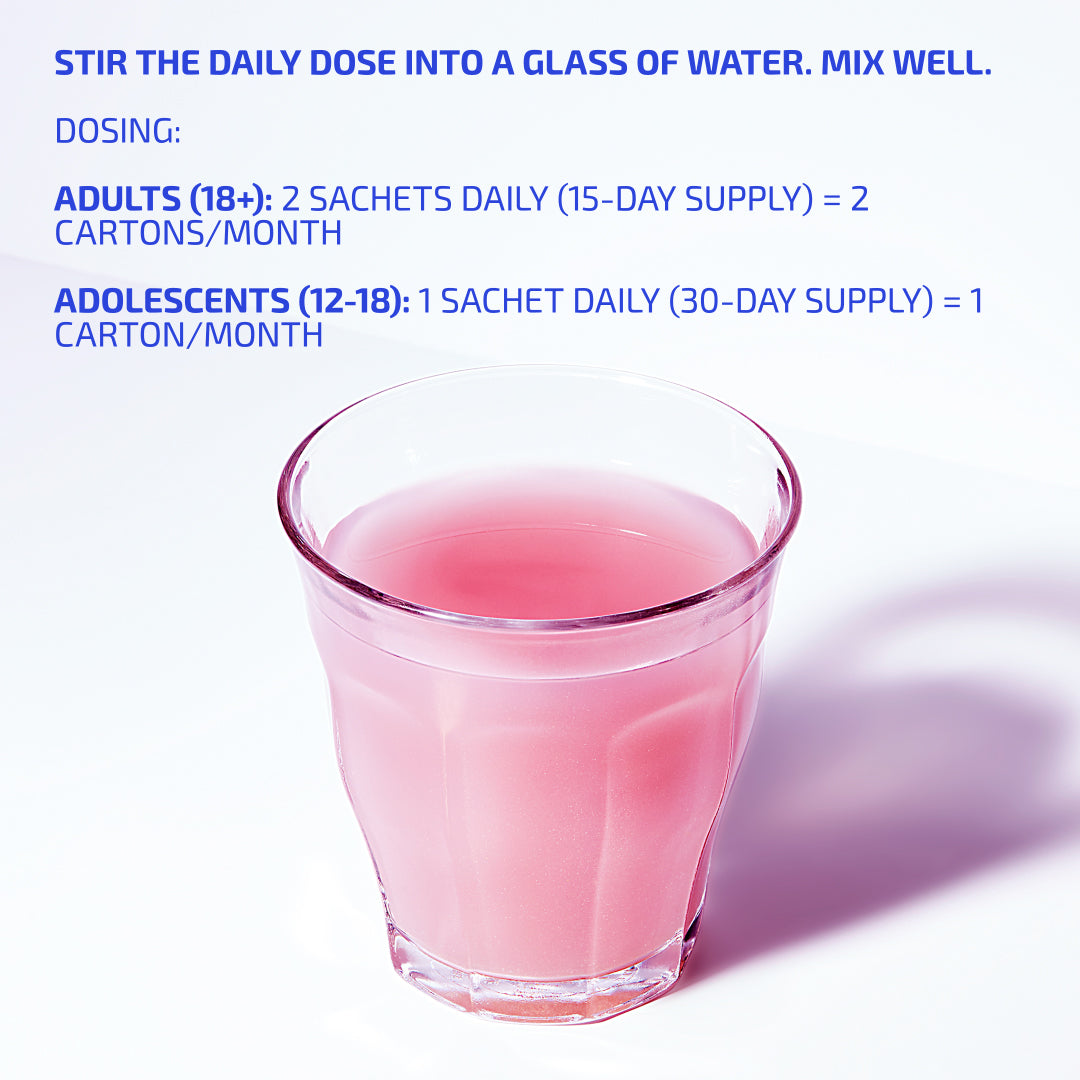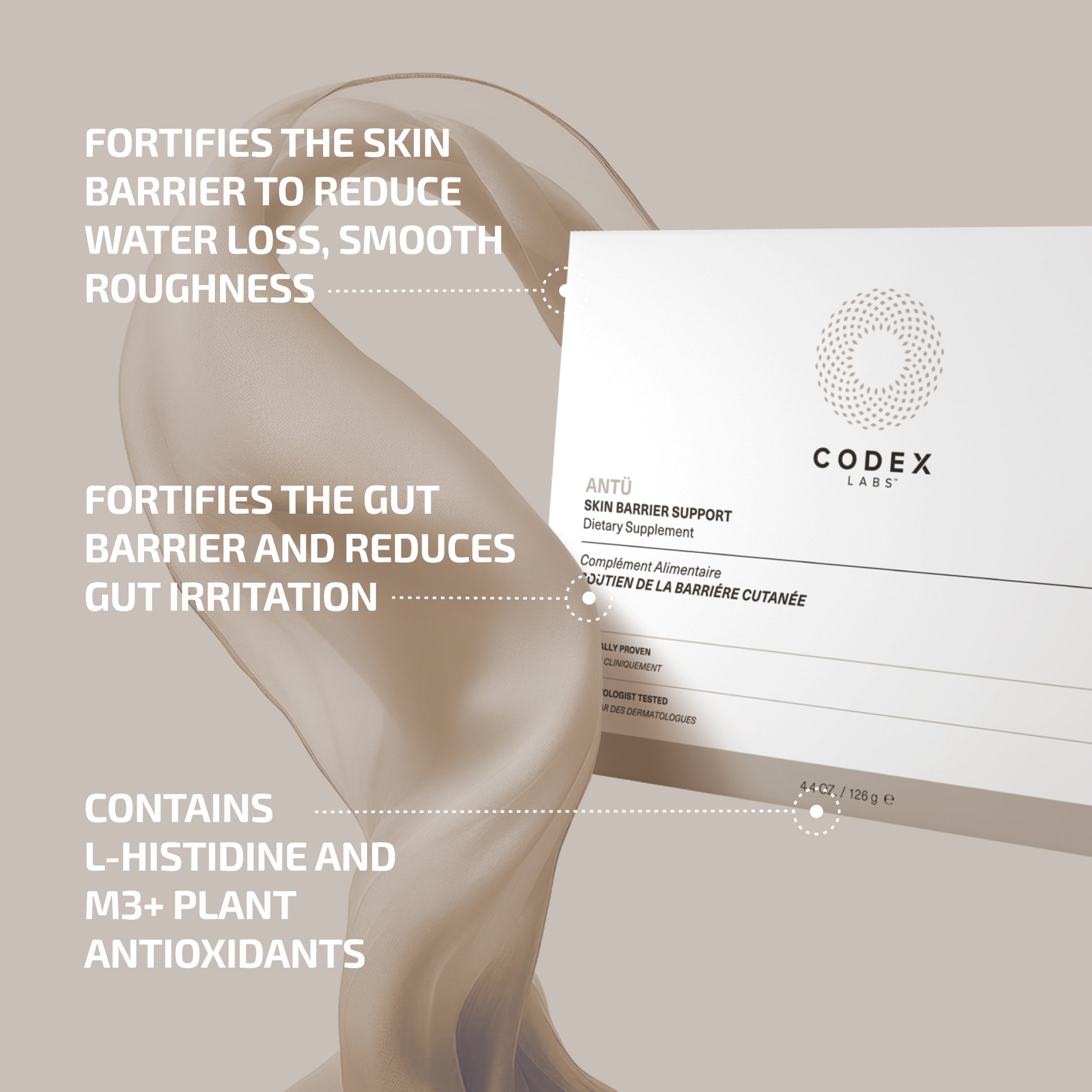Summary
- Sunspots are brown patches caused by sun exposure and melanin buildup, often made worse by inflamed or sensitive skin.
- People with eczema, rosacea, acne, or psoriasis may be more prone due to a weakened skin barrier.
- Daily mineral SPF is essential to prevent and protect against sunspot formation
- Gentle brighteners like niacinamide and licorice root help fade spots without irritation.
- Support your skin barrier with soothing ingredients and supplements like L-histidine for better results.
- Consistency and patience are key so expect gradual results over several weeks.
Introduction
Sunspots, you know, those flat, brownish marks that seem to appear out of nowhere on your face after a summer of sun and fun, might seem quite harmless at first. But if you're already dealing with rosacea, eczema, psoriasis, or acne, they can feel like yet another skin concern to throw on top of your existing pile of skin issues that you now have to worry about. You might even wonder, "Can I even treat these without making everything else worse?" The answer, luckily, is yes and you don't have to overhaul your skincare routine or risk flare-ups to do it.
In this guide, we'll walk you through what sunspots are, why they form (especially if you have inflammation-prone skin), and how to treat and prevent them gently and effectively. Let's get into it.

What Are Sunspots? [1]
Sunspots, also called age spots, are flat, pigmented patches that usually appear on areas frequently exposed to the sun with your cheeks, forehead, upper lip, and nose representing the most common target areas. Unlike freckles (which can fade with sun avoidance) or melasma (hormonally triggered discoloration), sunspots tend to stick around unless treated.
If you're dealing with chronic skin inflammation like eczema, rosacea, or acne, your skin barrier is most likely already compromised (damaged). This makes you even more susceptible to UV-triggered pigmentation, meaning, sunspots can be even more pronounced and harder to fade in inflamed or sensitized skin.
Causes of Sunspots
Sunspots form when your skin overproduces melanin (your body's natural pigment) in response to UV radiation. Over time, this pigment clumps in certain areas, creating those signature dark patches.
But that's not all. Here are some deeper triggers that can make sunspots even worse:
- Inflammation: Skin that's constantly inflamed (think eczema, rosacea, or acne) is more reactive to environmental stress, including sun exposure.
- Hormonal shifts: Hormones play a huge role in how your skin reacts to the sun, especially during pregnancy, menopause, or when managing chronic stress.
- Post-inflammatory hyperpigmentation: Sadly, if you've had breakouts or irritation, your skin may now be even more likely to produce melanin in those areas after sun exposure.
Symptoms and Identification
Sunspots are:
- Flat, round, or oval in shape
- Light to dark brown in color
- Most often found on the face, neck, shoulders, and hands
- Usually painless and non-itchy
Unlike acne marks or psoriasis plaques, they don't cause texture changes or raised areas. They are just spots (clumps) of excess pigment. They're also persistent and don't go away without some form of treatment.
Treatment Options [2]
If you have sensitive or inflammation-prone skin, your sunspot treatment plan needs to balance effectiveness with gentleness. Here are some options:
Topical Ingredients (Gentle Yet Effective)
- Niacinamide: Brightens dark spots, calms inflammation, and supports the skin barrier.
- Licorice root extract: Naturally brightens and soothes sensitive skin.
- Sea buckthorn: Loaded with antioxidants and vitamins to help repair and restore the skin.
- Daisy (Bellis perennis): helps suppress melanin production with polyphenols and gently exfoliate with alpha-hydroxy-acids.
Products such as Codex's BIA NOURISHING FACIAL OIL and ANTU OVERNIGHT REPAID CREAM which, in addition to hydrating and smoothing your skin in a microbiome-friendly way, also helps to brighten the skin while reducing hyperpigmentation due to the presence of sea buckthorn, a potent antioxidant-rich plant extract.
Barrier Support Supplements
Internal (inside the body) support matters too. Codex Labs' ANTU SKIN BARRIER SUPPORT SUPPLEMENT contains L-histidine, an amino acid clinically shown to support moisture retention and calm inflammation from within, thereby helping to reduce pigmentation risk while supporting healing.
Low-Impact Exfoliation
- Lactic acid: A gentle AHA that exfoliates while hydrating
- Enzyme exfoliants: Derived from fruits like mango, mombin plum, papaya, or pumpkin which are great for sensitive skin
Avoid scrubs with sharp particles or high-strength chemical peels. Overdoing exfoliation can trigger flare-ups or worsen existing conditions.
For exceptional low-impact exfoliation, you may wish to consider using the ANTU TONING RADIANCE MIST with Mother Nature's fruit-derived AHA exfoliants.
When to See a Dermatologist
If your sunspots are stubborn, spreading, or you're unsure what's causing them, it's always best to consult a dermatologist. They can safely guide you through options like prescription creams, gentle peels, or laser treatments tailored for sensitive skin types.
Prevention Strategies [3]
The best way of dealing with sunspots is to prevent them from forming in the first place. Here's how to keep sunspots from becoming a recurring issue:
Daily SPF-No Exceptions
Sunscreen is your best friend forever (BFF). Choose a mineral based SPF with zinc oxide or titanium dioxide, especially if you're naturally prone to redness or reactivity.
Hydrate + Repair
Stick to products that help to repair, strengthen, and maintain the skin barrier. Look for ingredients like hyaluronic acid, ceramides, panthenol, and L-histidine to help reduce inflammation and boost resilience.
Antioxidants = Sunspot Insurance
Ingredients like vitamin C, green tea, M3 (by Codex), and sea buckthorn help neutralize free radicals caused by sun exposure thereby preventing further pigment formation.
Myths and Facts
MYTH: Only older people get sunspots.FACT: They can show up at any age, especially after prolonged sun exposure or inflammation.
MYTH: Lemon juice will fade them.FACT: DIY acids can burn your skin, especially if you already suffer from conditions like rosacea or eczema.
MYTH: Tanning helps "even out" spots.FACT: Tanning further darkens them while increasing your risk of even more pigmentation.
FAQ
Q1: How can I fade sunspots naturally?Use brightening ingredients like niacinamide, licorice root, and sea buckthorn. And don't forget daily sunscreen application.
Q2: Can sunspots go away on their own?Not usually. They often need targeted treatment to fade.
Q3: Are sunspots dangerous?They're typically quite harmless but should be monitored. See a dermatologist if they change in size, shape, or color.
Q4: Will exfoliating help remove sunspots?Yes but be sure to choose gentle options like lactic acid or enzymes. Also avoid scrubbing sensitive skin.
Q5: Can people with eczema treat sunspots?Yes just please be sure to stick with skin barrier-safe, non-irritating ingredients.
Q6: What causes sunspots on my face?Sun exposure, inflammation, and post-acne marks are common culprits.
Q7: What's the best sunscreen for sunspots?Mineral sunscreens with a minimum SPF 30+ together with soothing ingredients.
Q8: How long does it take to fade sunspots?4 to 12 weeks with consistent, gentle treatment.
Q9: Can supplements help with sunspots?Yes supplements that support the skin barrier and reduce inflammation can reduce pigmentation.
Q10: What products are best for sunspots and acne?Look for non-comedogenic formulas with niacinamide, sea buckthorn, and anti-inflammatory ingredients.
Conclusion
Sunspots may not be dangerous, but they can be frustrating-especially when your skin is already fighting flare-ups or sensitivity. The good news? With gentle, targeted care, it is possible to fade them without triggering your skin.
Focus on daily SPF, barrier repair, and plant-powered brighteners-and always give your skin the consistency and kindness it needs to heal.
Call to Action
Have you struggled with sunspots while managing eczema, acne, or rosacea? If so, you'll definitely want to treat your sun-drenched skin to one or more of the following skin-brightening Codex Labs products.
First up, is our ANTU SKIN BARRIER SUPPORT SUPPLEMENT specifically geared toward repairing and strengthening the skin barrier in order to help promote skin cell turnover which encourages the shedding of damaged (dark) skin cells while promoting the emergence of new, healthy cells.
Next, is the ANTU RADIANCE MIST, a soothing spray that reinvigorates skin with moisture-replenishing hyaluronic acid for instant hydration, coupled with alpha hydroxy acids (AHAs) that help to gently exfoliate sun damaged dead skin cells.
To fully leverage the benefits of your daily "beauty sleep" routine while focusing specifically on reducing the appearance of sunspots, there is the ANTU OVERNIGHT REPAIR CREAM containing daisy flower extract which has been shown to reduce the appearance of sunspots and hyperpigmentation by inhibiting melanin production while promoting skin cell turnover.
Lastly, there is BIA NOURISHING OIL, an award-winning moisturizing oil that contains sea buckthorn oil with high levels of vitamins A and C to brighten skin and fade discoloration, and omega-7 to help reduce melanin production, a key factor in hyperpigmentation.
So, if you're looking to fade unsightly sunspots and avoid further hyperpigmentation in an efficacious way that also strengthens and supports your skin barrier 'round-the-clock', give these clinically proven formulations a try. We know you'll be happy with what you see in the mirror. How can we be so sure? Because we have the DATA to prove it!
Customer reviews:
***** Makeup L.
Antu Radiance Mist
It is very hydrating but also feels as if it is tightening the skin. It gives a radiance to the skin after drying down. It makes your skin very soft and refined looking.
***** Fionnuala C.
Bia Facial Oil
I love this product. It's easy to use and is a great amount for the price. But the main thing is the difference it makes to your skin. I put it on at nighttime. When I put it on, I find that my skin looks radiant, smooth and supple. BUT when I wake up in the morning, my skin looks and feels the same. This tells me it is actually nourishing my skin and not just doing a quick fix, like some other products. I love it!
***** Ani S.
Antu Overnight Repair Cream
I absolutely love the scent with this night cream. It has become my favorite part of my nighttime beauty ritual. My skin feels refreshed and is noticeably brighter by morning.
References:
1. https://www.health.com/sunspots-8629020
2. https://www.healthline.com/health/sunspots-on-face
3. https://www.medicalnewstoday.com/articles/sunspots-on-face


